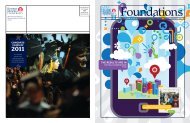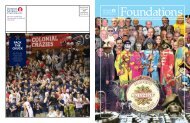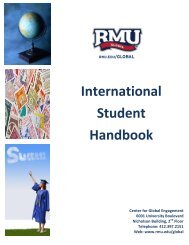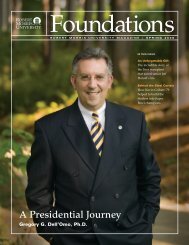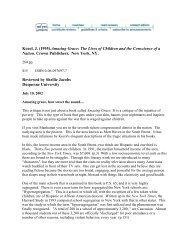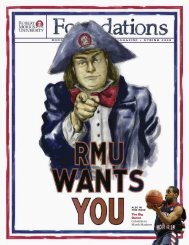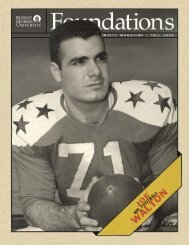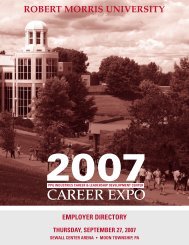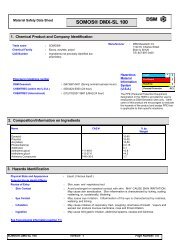Spring 2007 - Robert Morris University
Spring 2007 - Robert Morris University
Spring 2007 - Robert Morris University
- No tags were found...
You also want an ePaper? Increase the reach of your titles
YUMPU automatically turns print PDFs into web optimized ePapers that Google loves.
JO ANN DOWD + STUDENT IN THE M.S.N. PROGRAM, NURSING EDUCATION TRACK<br />
FARHANA HAMID + STUDENT IN THE B.S.N. PROGRAM<br />
FILLING THE<br />
LYNDA DAVIDSON, PH.D., RN + DEAN OF THE SCHOOL OF NURSING<br />
HEALTHCARE + VOID<br />
MICHAEL O’BRIEN ‘06, RN + EMERGENCY ROOM REGISTERED NURSE, SEWIC K L EY VALLEY HOSPITAL<br />
By 2020, Americans might find that a simple trip to the<br />
doctor’s office isn’t so simple anymore. As the Baby Boom<br />
generation nears retirement age, the U.S. health care system<br />
is suffering from a severe shortage of physicians and other<br />
health care professionals.<br />
The number of new physicians licensed each year has held<br />
steady for the past two decades, while demand for health<br />
care services has climbed sharply. Predictions vary, but the<br />
shortfall could be as high as 200,000 doctors by 2020.<br />
The situation in Pennsylvania is particularly acute, as the<br />
state has seen an exodus of doctors fleeing high malpractice<br />
insurance premiums, just as the state’s elderly population –<br />
the biggest consumers of health care – is set to expand by 23<br />
percent. Pennsylvania is already short by as many as 10,000<br />
physicians; to make up the deficit, the state needs 25<br />
percent more doctors.<br />
That’s unlikely to happen. Training a physician takes 10<br />
years. This year’s new doctors started school in 1997,<br />
well before any shortage was anticipated.<br />
To help fill this gap between demand and supply, the health<br />
care community is increasingly turning to nurse practitioners,<br />
highly trained specialists who are able to assume some of<br />
the duties normally carried out by physicians. By redefining<br />
the traditional physician and nurse roles, the need for<br />
additional doctors could be reduced by as much as 50<br />
percent. Pennsylvania Gov. Edward G. Rendell, in his<br />
“Prescription for Pennsylvania” health care proposal,<br />
called for a dramatic expansion of the role played by<br />
nurse practitioners in the state.<br />
12 • WWW.RMU.EDU



